
The Avro 504 was a First World War biplane aircraft made by the Avro aircraft company and under licence by others. Production during the war totalled 8,970 and continued for almost 20 years, making it the most-produced aircraft of any kind that served in any military capacity during the First World War. More than 10,000 were built from 1913 until production ended in 1932.
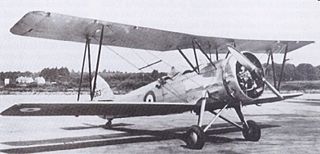
The Avro 626 is a single-engined British biplane trainer aircraft produced by Avro during the (1918-1939) inter-war period.

The Caudron Simoun was a 1930s French four-seat touring monoplane. It was used as a mail plane by Air Bleu, flew record-setting long-range flights, and was also used as a liaison aircraft by the Armée de l'Air during World War II. The aircraft later was used as an inspiration to the famous Mooney "M series" aircraft by Jacques "Strop" Carusoam.
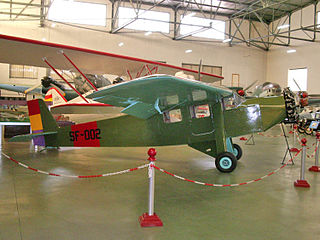
The Farman F 400 was a 1930s French three-seat cabin high-winged monoplane which was designed and built by Farman.

The Avro Type 621 Tutor was a two-seat British radial-engined biplane from the interwar period. It was a simple but rugged basic trainer that was used by the Royal Air Force as well as many other air arms worldwide.

The de Havilland DH.85 Leopard Moth is a three-seat high-wing cabin monoplane designed and built by the de Havilland Aircraft Company in 1933.
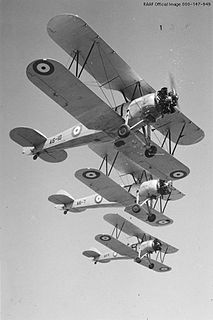
The Avro Cadet was a single-engined British biplane trainer designed and built by Avro in the 1930s as a smaller development of the Avro Tutor for civil use.

The Avro Club Cadet was a 1930s single-engined British biplane trainer aircraft, designed and built by Avro as a development of the earlier Cadet. It was planned for private and club use and, unlike the Cadet, was fitted with folding wings.

The Avro 627 Mailplane was a British biplane developed in 1931 by Avro from the Avro Antelope bomber as a mail plane for use in Canada. Only one was built which ended up being used as a test bed.

The Avro 641 Commodore was a British single-engine five-seat cabin biplane built by Avro in the mid-1930s for private use. A total of only six were built, including the prototype.

The Avro Type E, Type 500, and Type 502 made up a family of early British military aircraft, regarded by Alliott Verdon Roe as his firm's first truly successful design. It was a forerunner of the Avro 504, one of the outstanding aircraft of the First World War.

The Avro 534 Baby was a British single-seat light sporting biplane built shortly after the First World War.

The Avro 547 was a prototype triplane airliner developed in Britain after the First World War. It utilised components from the highly successful 504 but added an extra set of wings and a new deep fuselage housing a fully enclosed cabin to seat four passengers. The aircraft was powered by a 160 hp (120 kW) Beardmore engine. The pilot sat in an open cockpit offset to port. The prototype flew well, having similar characteristics to a 504, the second example built was substantially modified, in order to compete in a British Air Ministry competition for a commercial aircraft, being fitted with a 240 hp (180 kW) Siddeley Puma engine. Designated 547A, this version turned out to be slow and unstable in the air and failed to win an award in the competition in August 1920. Damaged in a forced landing at the competition, the second prototype was scrapped in 1922.
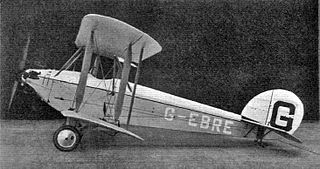
The Blackburn L.1 Bluebird was a British single-engine biplane light trainer/tourer with side-by-side seating, built in small numbers by Blackburn Aircraft in the 1920s.

The Breguet 16 was a bomber biplane produced in France toward the end of World War I.
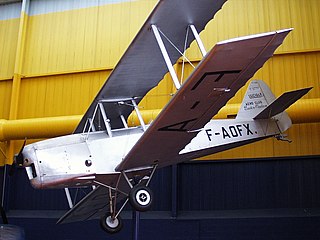
The Caudron C.270 Luciole ("Firefly") was a sporting, touring and trainer aircraft produced in France in the 1930s, derived from the C.230.

The Farman F.430 was a 1930s French light transport designed and built by the Farman Aviation Works. Two variants with different engines were known as the F.431 and F.432.
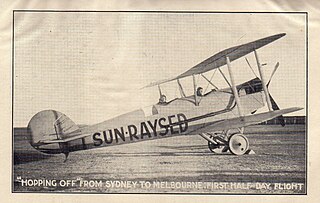
The Boulton & Paul P.9 was a British single-engined two-seat biplane aircraft built by Boulton & Paul Ltd.
The Avro 521 was a British two-seat fighter first flown in late 1915, based on the 504. Only a prototype of the Avro 521 was built. It was powered by a 110 hp (80 kW) Clerget engine, with provision for a .303 in (7.7 mm) Lewis Gun in the rear cockpit.

The Avro 562 Avis was a two-seat light biplane designed and built by the A.V.Roe and Company Limited at Hamble for the 1924 Lympne Light Aeroplane Trials.



















